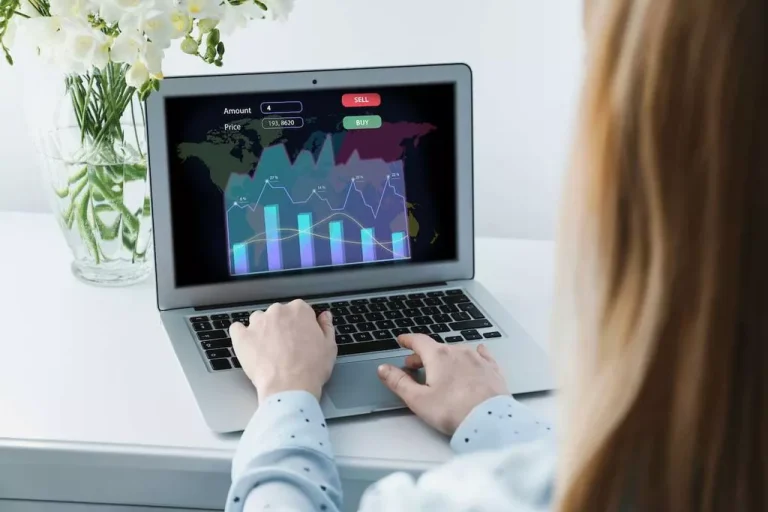Content
If the price is in a downtrend, the market structure shift level is generally going to be at a point where a higher high is made. In both cases, market structure shifts tend to occur on the heels of a displacement. Traders who understand liquidity in will be able to find areas where market makers and smart money are trying to trigger stop loss what is buy side liquidity orders or hunt for liquidity. This makes it easier to strategically place your stop loss when trading, so you don’t get liquidated by smart money and price action traders.
The Impact of Institutional Trading
Comprehending the role of liquidity pools is critical for Forex participants looking to finesse their positions within an ever-changing currency landscape. It allows traders to anticipate and brace for the intense market movement that such pools can instigate. Market liquidity is the cornerstone of the Forex market, reflecting the facility with which traders can purchase or sell positions without causing a significant impact on price stability. Swift and efficient transactions are facilitated by healthy market liquidity, which is essential for minimizing the cost of trading and enhancing the ability to https://www.xcritical.com/ enter and exit trades with minimal slippage.
Market Turmoil and Central Banks
The ability to execute trades without unwanted disruption depends significantly on the way these orders are organized and interact within the various price levels. “Smart money” players understand the nature of this concept and commonly will accumulate or distribute positions near levels where many stops reside. It is, in part, the sheer amount of stops at key levels that allow a larger player to fully realize their position. Once the level at which many stops are placed has been traded through, it’s often that the price will reverse course and head in the opposite direction, seeking liquidity at the opposite extreme.
Analysing emerging market returns with high-frequency data during the global financial crisis of 2007–2009

Zones regularly see convergence with simple moving averages weighted for different periods. Horizontal and trend line analysis also indicates boundaries where the momentum was stalling before. The sell side serves both the corporations issuing the securities, and all classes of investors from retail traders to larger financial institutions looking to transact. The concepts of buy and sell side liquidity play an important role in financial markets. Liquidity refers to the ease with which assets can be purchased or sold, and identifying areas of strong liquidity can provide valuable insights into market behaviour.

Particularly, the concept of buy side liquidity is a cornerstone in dissecting how large volumes and orders shape the market. Buy side trading activities, steered by prominent buy side liquidity providers, play a pivotal role in formulating the market’s direction and volatility. These orders are often stop-loss orders placed by traders who are holding long positions.
The intersection of buy side trading and liquidity provision is a dynamic that beckons skilled traders to attune their strategies accordingly. Equity, Futures, Crypto and forex trading contains substantial risk and is not for every investor. An investor could potentially lose all or more than the initial investment. Risk capital is money that can be lost without jeopardizing ones’ financial security or life style. Only risk capital should be used for trading and only those with sufficient risk capital should consider trading.
- Market makers often push the price slightly above these equal highs to trigger the buy orders, then immediately reverse the price with strong selling pressure.
- For traders who are used to utilizing chart patterns, Inducement can be seen in the formation of bull and bear flags.
- The perceptions of those zones remain in tune with the changing market conditions and the shifting behaviour of participants since the updating is constant.
- Along with that, we will look its predictive nature in technical analysis.
These points may indicate upcoming bullish momentum and could provide attractive entries for long positions. Similarly, by observing institutional behavior and market reactions to these liquidity levels, traders can determine strategic points to enter the market. Sell side liquidity is found below current market lows and consists of orders like buy stop losses and sell stop limit orders. It contrasts with buy side liquidity, which is above market highs and centres on bullish market sentiment. Sell side liquidity can signify potential bearish market trends, offering traders possible entry points for short positions. Understanding both types of liquidity helps traders make more nuanced decisions in response to market changes.

An awareness of structural liquidity allows traders to anticipate and possibly avoid traps set by major players, and also to recognize key moments when price momentum may accelerate. Institutional traders exert considerable clout in the Forex market, leveraging their large capital reserves and sophisticated trading strategies to create significant buy side liquidity. Their trades typically gather around crucial price levels, awaiting breakout moments to direct the market’s trajectory. Through their actions, institutions can amplify Forex market dynamics, moving prices with their large-volume orders. Institutional trading entities exploit the accumulations of these orders strategically to direct the marketplace, making an advanced grasp of market mechanics an indispensable asset for the modern trader. The dance between supply and demand grows increasingly complex with the involvement of large financial institutions that can create, shift, or absorb liquidity to initiate bullish or bearish price movements at will.
In fast and volatile markets, quick position closures by traders lead to price reversals in the opposite direction. Liquidity’s role in price action is multifaceted, impacting both stability and responsiveness within Forex markets. A densely liquid market facilitates smoother Forex trading execution, mitigating the likelihood of disruptive price slippage. In contrast, a thin liquidity layer can preface a volatile market reaction, amplifying the effects of trade orders on currency value. As by the discussion above you have understood the meaning and types of liquidity in forex trading and you also got to know that market makers look to hunt the liquidity.
Although both are controlled by the SEC and related state regulators, fiduciary responsibilities for the buy side go so far as advice. The strict legal boundaries aim at minimizing conflicts of interest in dealing with the customers’ funds. On the sell side, the regulation aims more at market integrity and transparency in being middlemen. The buy side primarily focuses on outperforming over a more extended time horizon through superior investment selection and portfolio management. Cutting edge UI and seamless trading experience meet each other in our white label trading platform primed for your own brokerage brand. Unlike other trading systems or software, ICT is not a one-size-fits-all approach.
Smart money will accumulate or distribute positions near these levels where many stops are placed and absorb all provided liquidity. Sell side liquidity zones emerge from the positions of traders who have established long positions within an asset. These are formed below key support price levels, where traders on the long side of the market will have an interest in defending any latent downside risk. Resistance is where an uptrend fails to continue climbing higher, marked by decreased buying enthusiasm and increased short-term positions taking place above that price level.
After studying this article and practicing in the markets, you will be able to spot resting liquidity in the market like a pro. We offer a set of proven indicators and advanced Algos/Systems that help traders to get the edge they deserve. Charting liquidity patterns daily is a very valuable context during emerging moves. An update makes it easy not to hang onto the outdated perceptions that offend the language of the market for that day. Liquidity not only evolves over the course of days but it changes during the day, as different groups of participants come into and out of the market.
Liquidity crisis on an individual basis are witnessed daily in crypto markets where asset issuers rug pull and remove all liquidity form their markets making their tokens worthless. This happening on decentralized exchanges (DEXes) that are not as traditional markets based on limit order-books, but on liquidity pools and a quote-based market. On more serious crypto asset markets, however, liquidity and liquidity shortages underly the same dynamics and causes as traditional public markets. At T. Rowe Price, Canwell said his firm evaluates all liquidity providers and is aware of the bilateral liquidity available via agency brokers.
For active assets, there is often clustering of short-term short positions that create visible buy side zones just above psychologically round numbers or technical price levels where prior selling was seen. Larger price swings are a result if market order incoming frequency doesn’t decrease more or equally. Liquidity pools, being concentrations of resting orders, have the potential to cause rapid shifts in market momentum when targeted by significant market players. This can lead to price slippage, which is when an order is filled at a different price than expected due to changes in liquidity. Such movements can alter trade execution quality, making it vital for traders to understand these effects. Conversely, sell side liquidity, found beneath market lows, offers a contrasting perspective.
However, if you’re scalping, you only want to focus on relevant timeframes for liquidity levels such as the 30 minute or 1 hour. The timeframes to use for identifying your liquidity levels should be in relation to the timeframe you prefer to trade on. Market makers exploit these levels to orchestrate liquidity hunts, triggering buy stops before reversing the price direction. One stock declined to support under $15 and consolidated sideways for weeks within a $13.50 sell side zone where buying repeatedly absorbed downside tests. Its puncture catalyzed a surprising two-dollar plunge lower as hopeful short-term bulls bailed en masse, with stops triggered in tow below.
Laisser un commentaire